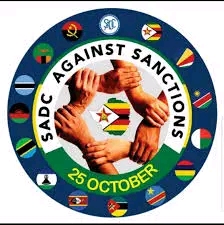By Panashe Hamudiwamwe
Zimbabwe celebrated its 44th Heroes Day on Monday with a vibrant ceremony at the National Heroes Acre in Harare, where President Emmerson Mnangagwa emphasized the importance of continually honoring Liberation War heroes and enhancing support for veterans and their families, as well as other outstanding citizens contributing to national development.
In his address, President Mnangagwa outlined ongoing and upcoming programs designed to benefit and honor deserving citizens, both living and deceased, and underscored the government’s commitment to memorializing the sacrifices made during the liberation struggle.
“The Second Republic recognizes the importance of repatriating and reburial of our Liberation War heroes who remain in shallow and unmarked graves both within Zimbabwe and abroad. We are allocating resources to ensure that these veterans are finally laid to rest with the dignity they deserve,” he said.
The continuous search of these gallant sons and daughters, who passed away in various locations, is important, especially given the circumstances of their deaths, which may have prevented them from receiving a decent burial.
This effort aligns with the goal of preservation of history. The President highlighted the need to document Zimbabwe’s struggle for independence.
“Accurately recording and preserving the story of our Liberation Struggle is essential. We have valuable records both here and in countries that supported our fight for freedom. These records need to be collated, annotated, and stored electronically for easy access and retrieval,” Mnangagwa explained.
The President also discussed ongoing initiatives by the Department of National Archives of Zimbabwe, which is working to establish liberation heritage archives and sites across the country.
“We are partnering with families of nationalists to create archives and sites in all ten provinces, focusing on significant locations such as the Kamungoma Massacre Site and the Butcher Site in Rusape. These efforts aim to ensure that our heritage is well-documented and preserved,” he noted.
Addressing the role of the Ministry of Veterans of the Liberation Struggle Affairs in raising awareness about veterans’ benefits, the President acknowledged that many beneficiaries were unaware of these programs.
“We are conducting nationwide campaigns to increase awareness among war veterans and their families about the benefits available to them. Many widows and children of our heroes are not fully informed about the support they are entitled to, and we are working to address this,” he said.
For the first time in history, the commemoration included the presentation of medals to 184,310 individuals, including war veterans, ex-political prisoners, war collaborators, and non-combatant citizens.
The President announced the breakdown of the recipients of these honors: 56,681 war veterans, 7,839 ex-political prisoners, 110,374 war collaborators, and 9,990 non-combatant cadres. These individuals received various awards, including the Royal Order of Munhumutapa and the Gold Cross of Zimbabwe.
Additionally, the President paid tribute to the Black Umfolosi ensemble, a notable music group, for their song “Unity,” recognizing its role in promoting national cohesion.
Said the President: “From Plumtree to Mutare, from Beitbridge to Chirundu, our unity is symbolized by our shared national flag. The song ‘Unity’ by Black Umfolosi embodies the spirit of togetherness that defines us as a nation.”
The 44th Heroes Day celebrations served as a reminder of Zimbabwe’s journey toward honoring its heroes and the ongoing commitment to supporting those who fought for the country’s freedom.
The First Chimurenga, also known as the First War of Liberation, was an early resistance against colonial rule that took place from the 1890s to 1897. This conflict arose as the British South Africa Company imposed its rule over the Shona and Ndebele peoples, leading to widespread discontent and armed resistance.
Leaders such as Mbuya Nehanda, King Lobengula, Sekuru Kaguvi, Chiefs Makoni, and Chiwashira emerged as key figures in this struggle. Despite its eventual suppression, the First Chimurenga laid the groundwork for subsequent liberation movements and is remembered as a critical precursor to Zimbabwe’s later struggle for independence.
The Second Chimurenga began in 1966, driven by two main nationalist movements: the Zimbabwe African National Union (ZANU) and the Zimbabwe African People’s Union (ZAPU), whose military wings were ZANLA and ZIPRA respectively.
The conflict was deeply rooted in the country’s history of racial discrimination and economic exploitation under colonial rule. The white-minority government of Ian Smith declared unilateral independence from Britain in 1965, but this declaration was not recognized internationally and only deepened the resolve of the liberation movements.
The struggle was characterized by intense and often brutal clashes, but Zimbabweans, with the support of friendly countries, sacrificed until independence was achieved.
The war officially ended in December 1979 with the signing of the Lancaster House Agreement, which paved the way for recognized independence and the establishment of Zimbabwe. The country’s first democratic elections in 1980 saw the victory of ZANU-PF and the ascension of Robert Mugabe as Prime Minister.
The end of the liberation war marked the beginning of a new era for Zimbabwe, but the legacy of the struggle and the sacrifices made continue to be central themes in the country’s national identity and commemorations.


